 |
|
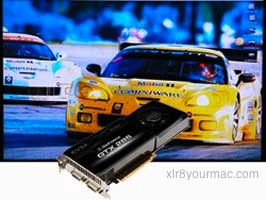 Review: EVGA GeForce GTX 285 Mac Edition Published: 6/9/2009 |
|
|
|
|
|
|
|
|
I made a separate page for this as some Mac owners don't care to run Windows (or hear about it), although many readers with Intel-based Mac owners are running bootcamp - generally to have access to a huge library of games (many/most that will likely never have an OS X version). This is not meant to be a review of the card in Windows (there are many well-known PC sites that do a much better job at that - just search for PC Geforce GTX-285 reviews) but just some notes and ramblings on what I've seen in the first few days of Bootcamp use. (64bit Vista Ultimate is installed on a separate drive in the Mac Pro.) I've not seen any issues with the GTX 285 (or ATI 4870 for that matter) booting back and forth between OS X and Vista or in general use. (I do not sleep the Tower in Windows however, normally I only boot to it to run a game, update the Norton 2009 AV defs or check for updates.) Before installing the card, I downloaded the latest reference drivers from Nvidia as of this 2009 post date, v185.85). EVGA's drivers page links to the same nvidia page although they have other software also. (And Nvidia's site of course also has a ton of other software - PhysX, demos, etc.) I then removed the ATI Catalyst (9.5) drivers (I didn't use a driver sweep utility, although some do) and shut down the machine to swap the card out. A little background:
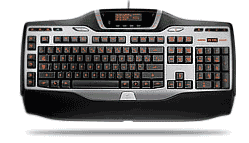 I downloaded the Precision utility at EVGA's site and installed it, as well as the latest Logitech G15 software for Vista 64. (I disabled most of the standard LCD apps from Logitech like Clock, email scanning/alerts, media player, etc. although some may find them useful.)
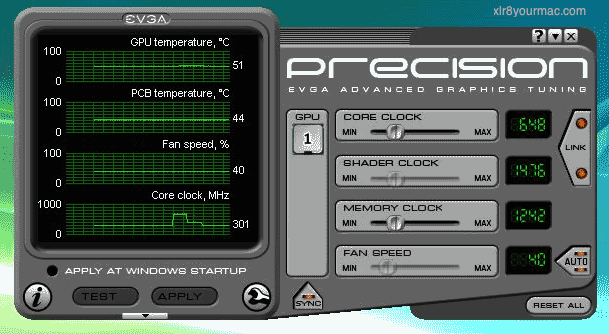 As shown above, the utility has running graphs over time of temperatures, clock speeds (cycles down on idle, up on load), fan speeds and allows manual adjustments if desired. (This isn't unique of course, RivaTuner (which this is based on) has been around for years and ATI's Catalyst drivers for Windows includes their "OverDrive" utility with fan speed control.) When active (I minimize to tray), the G15's LCD shows similar info and during gaming will also report FPS. I found this very useful to see actual framerates during play, as well as the ability to easily monitor temperatures while a full-screen game is running. (And yes, the Geek factor is very high.)
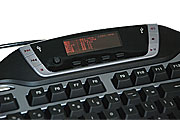
Here's a photo of the G15 Keyboard's LCD taken at the intro (video) in Call of Duty 4. (FPS rate during play was typically much higher - at times over 100fps.)
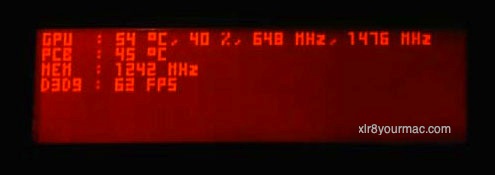 During an appx 20 min stint in COD 4 (1920x1200, 4x FSAA, max AF, shadows, high texture settings, etc. - using 185.85 Nvidia drivers) I saw GPU temps of appx 72°C, well within the limits. And glancing down at the LCD during some firefights still showed very good FPS (usually at least 70 FPS, often higher). Although I had been generally satisfied with the 4870/512MB cards game performance (realizing it's not in the upper tier of 2009 PC cards), as expected, HQ COD4 performance was noticeably smoother with the GTX 285.
I don't have Quake 4 installed in windows (for direct comparison to OS X results) but ID's Doom III benchmarked at 167 FPS in an HOC (no audio) timedemo at 1920x1200, 4x FSAA, 8x AF and high quality settings.
I've not experimented with Overclocking the card (via Precision utility) but I'm not sure that's really worth it for a few more FPS. But it's nice to have the option. For years I've wished ATI and Nvidia would offer something similar for OS X users - at least the 3D/Video tweaking utility. (ATI's Control Panel for OS X (last seen with the G5 X1900 edition) is no longer supported or in development as far as I know.)
|
|
|
|
|
|
Intro/Specs | Apps/Game Tests | Pure Benchmarks | Bootcamp/Windows 64-bit Notes - or - |
|
|
Copyright © 2009, all rights reserved.
|